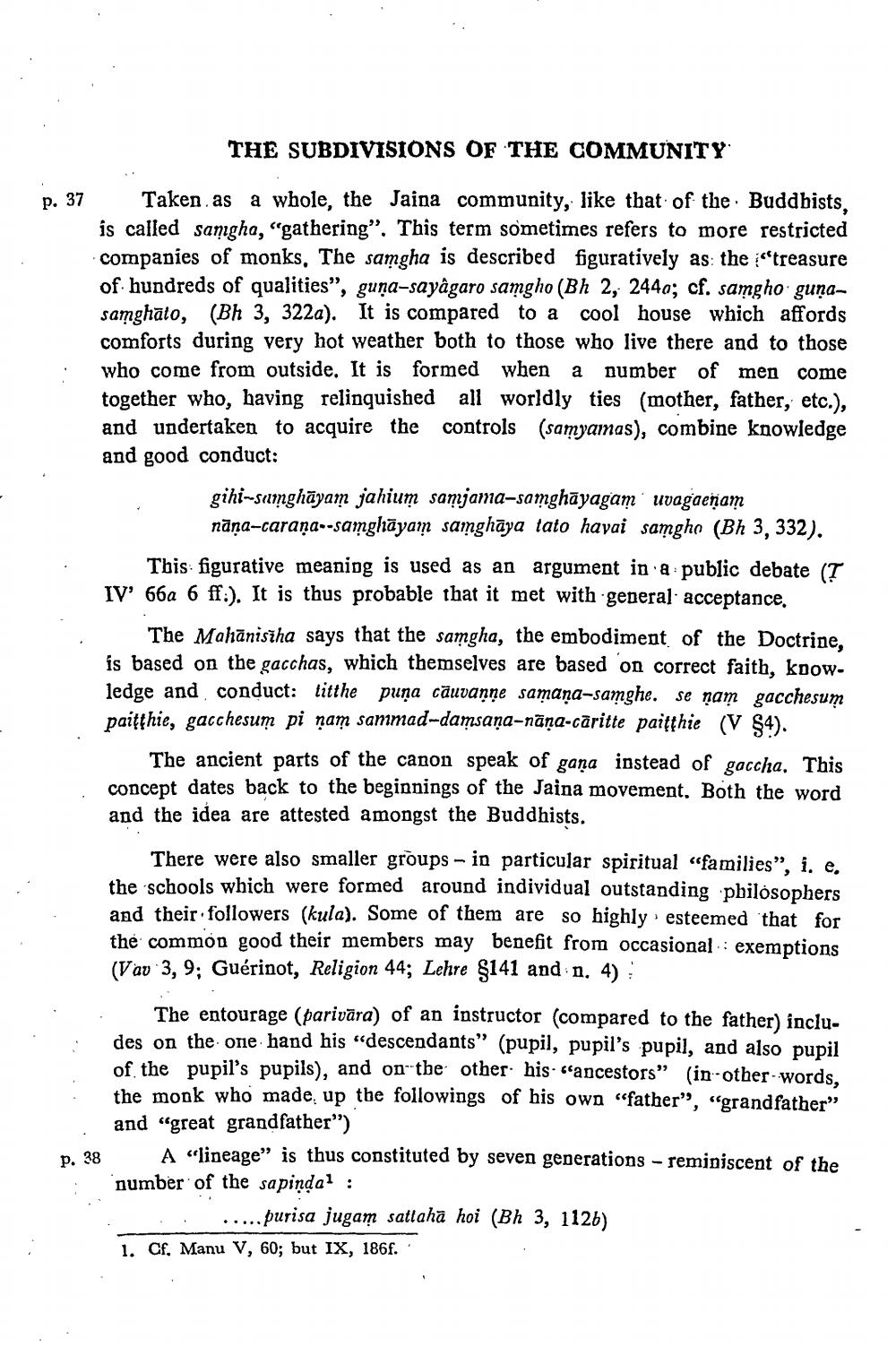________________
THE SUBDIVISIONS OF THE COMMUNITY
p. 37
Taken as a whole, the Jaina community, like that of the Buddbists. is called samgha, “gathering". This term sometimes refers to more restricted companies of monks, The samgha is described figuratively as the streasure of hundreds of qualities", guņa-sayâgaro samgho (Bh 2, 244o; cf. samgho gunasamghāto, (Bh 3, 322a). It is compared to a cool house which affords comforts during very hot weather both to those who live there and to those who come from outside. It is formed when a number of men come together who, having relinquished all worldly ties (mother, father, etc.), and undertaken to acquire the controls (samyamas), combine knowledge and good conduct:
gihi-sumghāyam jahium samjama-samghayagam uvagaenam
nāņa-caraña--samghāyam samghāya tato havai samgho (Bh 3, 332). This figurative meaning is used as an argument in a public debate (T IV 66a 6 ff:). It is thus probable that it met with general acceptance.
The Mahānisīha says that the samgha, the embodiment of the Doctrine. is based on the gacchas, which themselves are based on correct faith, knowledge and conduct: titthe puna câuvanne samana-samghe. se nam gacchesum paitthie, gacchesum pi ņam sammad-damsaņa-nāņa-cāritte paitthie (V 94).
The ancient parts of the canon speak of gaña instead of gaccha. This concept dates back to the beginnings of the Jaina movement. Both the word and the idea are attested amongst the Buddhists.
There were also smaller groups - in particular spiritual families", i. e. the schools which were formed around individual outstanding pbilosophers and their followers (kula). Some of them are so highly esteemed that for the common good their members may benefit from Occasional - exemptions (Vav 3, 9; Guérinot, Religion 44; Lehre $141 and n. 4)
The entourage (parivāra) of an instructor (compared to the father) includes on the one hand his "descendants" (pupil, pupil's pupil, and also pupil of the pupil's pupils), and on the other his ancestors" (in-other-words. the monk who made up the followings of his own “father", "grandfather” and "great grandfather")
A “lineage" is thus constituted by seven generations - reminiscent of the number of the sapindal :
.. .... purisa jugam sattaha hoi (Bh 3, 1126) 1. Cf. Manu V, 60; but IX, 186f.
29 i




